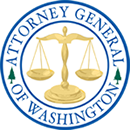Nick Brown
- Home
- AG Opinions
- CONSTITUTIONAL LAW ‑- INITIATIVES ‑- NUMBER OF SIGNATURES
CONSTITUTIONAL LAW ‑- INITIATIVES ‑- NUMBER OF SIGNATURES
AGO 1956 No. 342 -
CONSTITUTIONAL LAW ‑- INITIATIVES ‑- NUMBER OF SIGNATURES
A proposed initiative measure circulated and filed prior to December 6, must contain only 50,000 signatures; if filed after that date it must contain signatures equal to eight percent of the total number of votes cast for governor at the 1956 gubernatorial election.
- - - - - - - - - - - - -
November 19, 1956
Honorable Earl Coe
Secretary of State
Legislative Building
Olympia, Washington Cite as: AGO 55-57 No. 342
Dear Sir:
You have requested our opinion concerning the effect of proposed constitutional amendment SJR No. 4, approved by a majority of the voters at the November 6, 1956, general election, upon two proposed initiatives to the legislature, petitions for which are now being circulated.
SJR No. 4 provides in part that all state initiative measures must include a number of valid signatures of registered voters equal to the number of at least eight percent of the total number of votes cast for the office of governor at the "last preceding regular gubernatorial election."
At the present time, sponsors of the two initiatives to the legislature (Nos. 23 and 24) are circulating signature petition sheets in an effort to obtain sufficient signatures to authorize certification by your office of the respective measures to the 1957 legislature. The proposed text of Initiative No. 23 was filed in your office on August 7, 1956; that of Initiative No. 24 on September 18, 1956. At the time of each of these filings, the 7th Amendment to the Washington State Constitution, providing that no more than 50,000 signatures were necessary for the certification of an initiative measure, was in effect.
In view of the fact that the provisions of SJR No. 4 will supersede this requirement as of December 6, 1956, when it becomes law, you have asked the following questions:
(1) Does the constitutional requirement as to the number of valid signatures, in effect at the time of the original filing of these initiatives to the legislature, control?
[[Orig. Op. Page 2]]
(2) If the answer to the above is in the negative, does a distinction exist in the application of the provisions of SJR No. 4 as to whether the sponsors present their signatures on or before December 6?
(3) Should the provisions of SJR No. 4 be applicable, which is to be considered the "last preceding regular gubernatorial election" in this situation‑-that of 1952 or 1956?
Our answer to your first question is in the negative. Our answer to your second question is that should the signatures be filed prior to December 6, 1956, only 50,000 will be required to place the measure before the legislature; should they be filed after that date, the higher requirements of SJR No. 4 must be met. Our answer to your third question is that the controlling gubernatorial election is that of 1956.
ANALYSIS
With reference to your first question, the preliminary filing of the proposed initiative measures with your office is without significance except in so far as it initiates certain procedural processes which must be complied with prior to the time the measures are submitted to the legislature or to the people as the case may be. The constitution indicates that initiative measures are not formally proposed until such time as the signed petitions are submitted to your office for canvassing. Amendment 7, as presently in effect, reads in pertinent part as follows:
"Ten percentum, but in no case more than fifty thousand of the legal voters shall be required to propose any measure by such petition. * * *"
Thus should the signed petitions be presented after December 6, when SJR No. 4 becomes a law, they must contain sufficient signatures to comply with that law; but by the same reasoning, if they are presented before December 6, when the former provision is still in effect, and SJR No. 4 is as yet inoperative, fifty thousand signatures are all that will be required.
With reference to your third question, it seems clear that by the very terms of SJR No. 4, the gubernatorial election referred to is [[Orig. Op. Page 3]] that of 1956. No other gubernatorial election could correctly be described as the "last preceding."
We trust the foregoing will prove helpful.
Very truly yours,
DON EASTVOLD
Attorney General
JOHN S. ROBINSON
Assistant Attorney General

 Other Languages
Other Languages